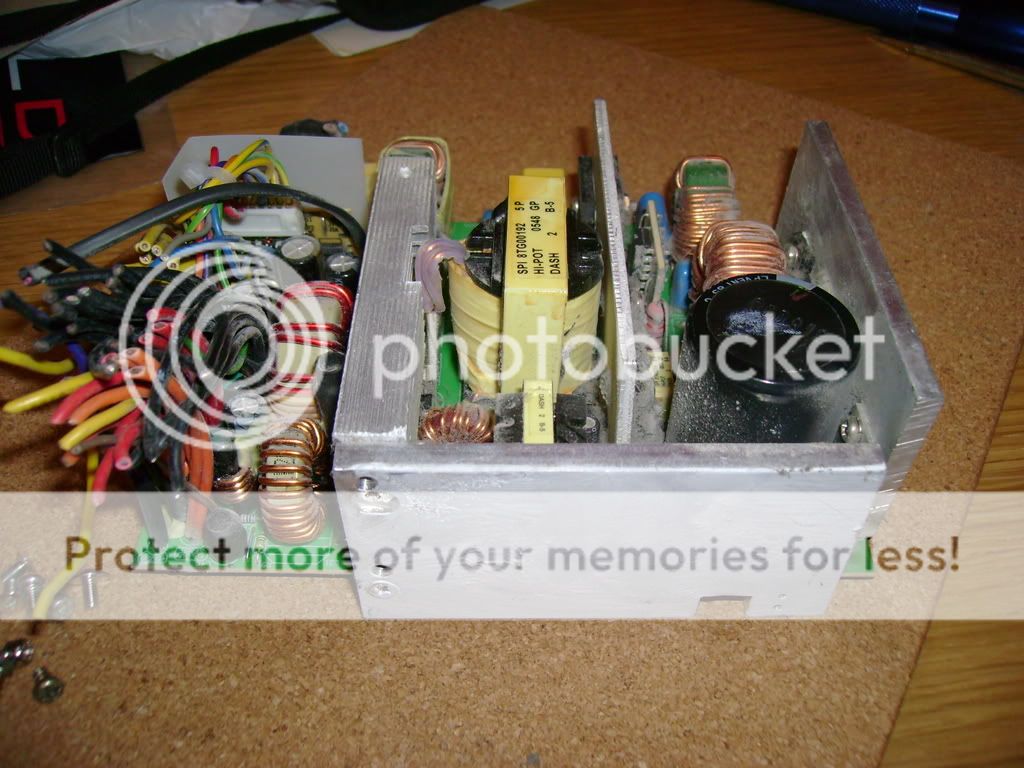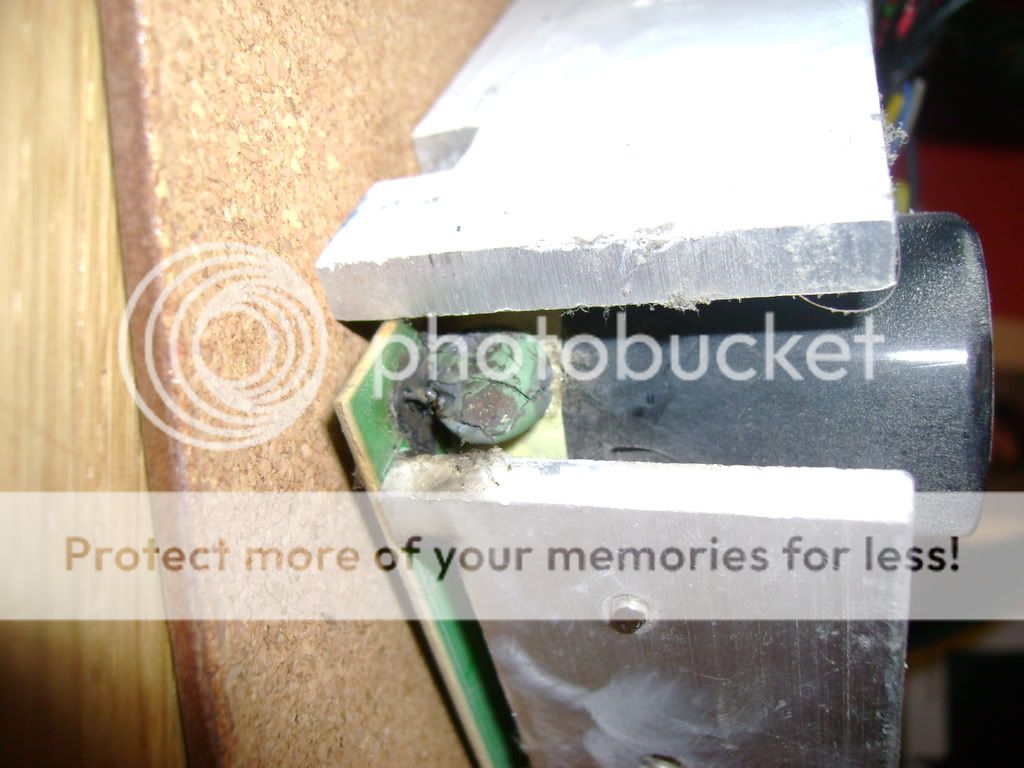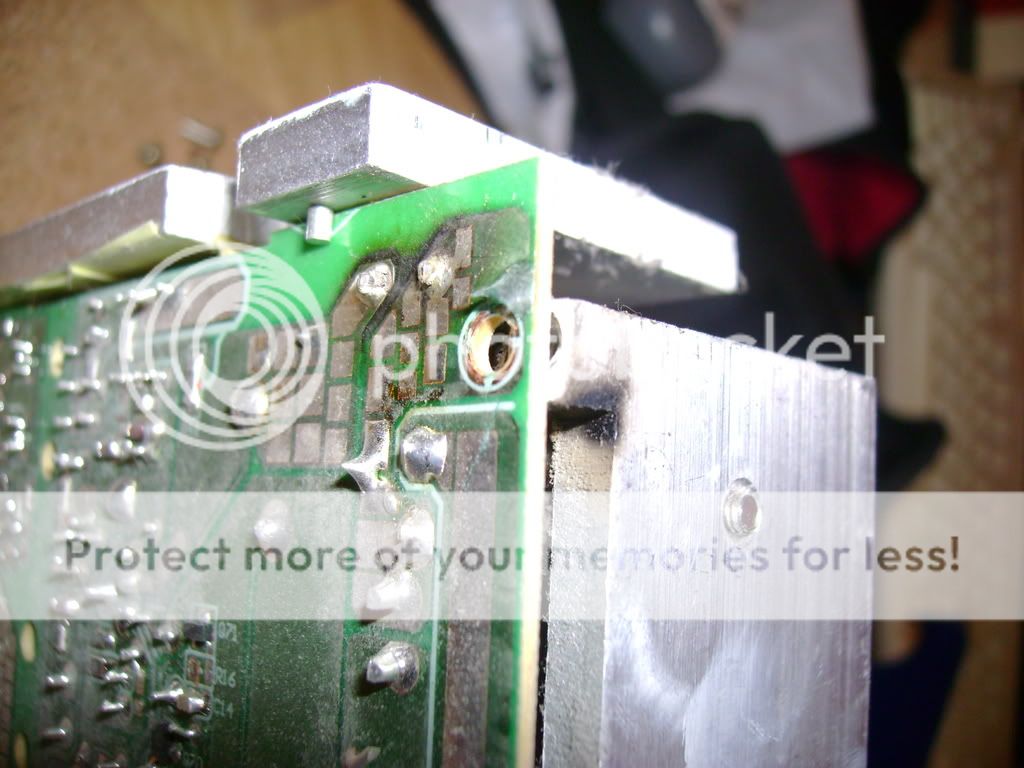Associate
- Joined
- 12 Aug 2005
- Posts
- 1,025
- Location
- Team 10
So my PSU recently died after almost 3 years of service. Thankfully, when it did go, nothing went with it 
It's out of warranty so being the sort of person who likes to know, I took it apart and seem to have found what I believe to be the culprit.
Orientation as seen from the main power cable in

Orientation as seen from the PC output cables

Failed component

Area around failed component (Note the black charring)

So, any ideas what it is?

It's out of warranty so being the sort of person who likes to know, I took it apart and seem to have found what I believe to be the culprit.
Orientation as seen from the main power cable in

Orientation as seen from the PC output cables

Failed component

Area around failed component (Note the black charring)

So, any ideas what it is?



